#like its themes of loss and grief and trying to understand people with radically different views of the world
Text
Getting into Frieren sucks because the story is great but the fans are reprehensibly horny about it
#frieren at the funeral#sousou no frieren#like its themes of loss and grief and trying to understand people with radically different views of the world#the nostalgia one can feel in their own life the cumulative nature of living#theres barely even elf tiddy where are the fans getting elf tiddy from???
18 notes
·
View notes
Text
Past Life Healing
All information is sourced from this book:
The Transformation: Healing Your Past Lives to Realize Your Soul's Potential by Ainslie MacLeod
10 Common Past Life Fears
1. Authority
Motivation: Identification
Goal: Equality
Past Life Experiences: persecution, being accused of witchcraft, being tortured or killed by authority figures
Resonance/Triggers in Present Life: social inequalities, corruption, anxiety around superiors at work or institutions, unequal rights, abuse of authority
Ways to Heal Soul: practice seeing yourself as not better or less than anyone else, regardless of labels or status; know that our souls acknowledge one another as equals
Spiritual Acts to Help Heal Collective: support underdogs, speak up for those who are oppressed by the more powerful in society
2. Loss
Motivation: Participation
Goal: Cooperation
Past Life Experiences: losing everything in a war or natural disaster, losing a child or loved one, losing community or way of life
Resonance/Triggers in Present Life: losing a job, death of a loved one, unwelcome change like divorce, relocation, not wanting to accumulate too much, using emotional distance as a defense mechanism, fearing instability
Ways to Heal Soul: choose to participate in life, even if it means risking a broken heart; find and keep kindred souls to help you encourage your desire to maintain relationships; allow yourself to properly grieve (instead of numbing) if loss does happen, so that your soul can learn that loss is a part of the human experience
Spiritual Acts to Help Heal Collective: donate time or money to a cause that supports those who have been affected by natural disasters or war
3. Inferiority
Motivation: Self-Determination
Goal: Respect
Past Life Experiences: physical or emotional abuse, death from suicide, an arranged marriage that was oppressive, disempowering family dynamic
Resonance/Triggers in Present Life: feeling stuck in a situation, feeling lesser than others, obsessive comparison, feeling disempowered regarding most life circumstances, using passivity to avoid conflict
Ways to Heal Soul: practice being proactive in making changes to your life, give yourself permission to own your personal power, refuse to be your own bully, build self-trust so that you can make informed decisions for yourself; taking control of your life helps build self-respect
Spiritual Acts to Help Heal Collective: once you learn to build self-respect through determination, spread what you’ve learned to help empower others; i.e. if you channeled your self-determination into a fitness goal and achieved, share what you learned with others so that they too can empower themselves
4. Betrayal
Motivation: Fairness
Goal: Justice
Past Life Experiences: negative relationships that included themes of betrayal or infidelity, community turning their back on you, being persecuted by those you trusted, injustice in court, harmed or killed by a family/friend/spouse
Resonance/Triggers in Present Life: being cheated on, being lied to, being taken advantage of by someone you trust, being gossiped about by family or friends, someone letting you down your expectations, having mistrust for most people, being overly suspicious in relationships
Ways to Heal Soul: learn to balance out levels of self-trust with trust for a few others, practice radical self-trust so that you can trust your own decisions regarding who else to trust besides yourself, maintain a level-headed sense of justice, heal the need to act out in vengeance since it will only perpetuate this karmic lesson
Spiritual Acts to Help Heal Collective: help victims of social or judicial injustice, i.e. those who have been wrongly convicted of crimes
5. Failure
Motivation: Curiosity
Goal: Knowledge
Past Life Experiences: ending a life prematurely, dying of illness, abuse, murder, or an accident at a young age, making a decision that led to death
Resonance/Triggers in Present Life: fear of making the wrong choice leading to paralysis, feeling like time is running out, wondering “what’s the point?” which can lead to deep stagnation, feeling urgency to complete life’s purpose
Ways to Heal Soul: allow yourself to follow your curiosity, your soul wants to learn as much as it can now because it feels its’ lost its’ opportunity to do so in a previous lifetime, allow yourself to accumulate as much knowledge as your soul wants to, trust that your soul chose to reincarnate now because it knows it has a greater opportunity to achieve its’ purpose in this lifetime than the last and that the knowledge that you collect will aid you on your quest this time around
Spiritual Acts to Help Heal Collective: once you’ve collected the knowledge that your soul wants you to learn, remember to spread and share that information with others as well, knowledge is a currency that is to be given and received
6. Intimacy
Motivation: Empathy
Goal: Understanding
Past Life Experiences: losing spouse to war or other unfortunate event, losing loved one to premature death, sexual assault or abuse, domestic violence, betrayed by loved one either physically or emotionally, unresolved grief for passed loved ones
Resonance/Triggers in Present Life: difficulty in building close relationships, uncomfortable with expressing or receiving affections, being cold and distant as a shield, choosing to separate oneself from others, noncommittal, using judgements to separate oneself emotionally
Ways to Heal Soul: allow yourself to feel as much as you think, practice empathy and putting yourself in another’s shoe, being vulnerable with those you trust can help build courage to be emotionally intimate with others
Spiritual Acts to Help Heal Collective: support causes that help to break down barriers to understanding, get involved with organizations that help victims of sexual abuse and/or domestic violence, learn about a culture that is different from your own
7. Self-Expression
Motivation: Honesty
Goal: Truth
Past Life Experiences: revealing a truth that caused imprisonment or death, persecution for lifestyle, holding strong opinions or beliefs that led to exile or death
Resonance/Triggers in Present Life: being shut down when being outspoken, afraid of sharing opinions, repressing one’s own thoughts out of fear, feeling anger when others try to suppress your voice
Ways to Heal Soul: try journaling to help you sort out your ideas or thoughts before sharing, by being honest with yourself first, you can grow more confident about sharing your truth with others, use artistic mediums to help you express yourself like creative writing, drawing, or poetry, practice expressing yourself authentically with people that you can trust
Spiritual Acts to Help Heal Collective: once you grow confidence in sharing your truth, use your voice to speak out for those who have little to no voice in our society, be a voice for a community or cause that you align with
8. Powerlessness
Motivation: Empowerment
Goal: Freedom
Past Life Experiences: imprisonment, slavery, oppression, life being derailed due to an authorities, experiencing unequal rights, disempowering marriages, family that was domineering
Resonance/Triggers in Present Life: being told what to do upsets you greatly, not being allowed to make your own choices or having them forced upon you frustrates you to the extremes, strong desire to rebel, wanting to fight the system or status quo often
Ways to Heal Soul: trusting that you have permission to be the authority over your own life, stand up for yourself and others, practicing to do so respectfully towards both yourself and others, removing yourself from situations that feel disempowering and not reacting impulsively, practice enforcing healthy boundaries
Spiritual Acts to Help Heal Collective: work to empower others which helps empowers ourselves, contribute to causes that fight issues like sex trafficking or poor working conditions for factory workers
9. Death
Motivation: Nonviolence
Goal: Peace
Past Life Experiences: violent deaths, dying in a war/battle, dying from nuclear bombs, enduring torture before death, dying as a civilian during a war, death by physical abuse of a family member or spouse, death by physical assault (random or premeditated)
Resonance/Triggers in Present Life: phobia of sickness, extreme anxiety regarding dangerous situations, imagining the worst-case scenario, phobia of strangers, phobias of sharp or dangerous objects, anxiety when placed in conflict
Ways to Heal Soul: while you can choose to pledge yourself to become a pacifist, another way to heal the soul, in this case, is to practice self-defense, learning to protect yourself can help build confidence and ease anxiety
Spiritual Acts to Help Heal Collective: support nonprofits that aid victims of violent crimes and speak up against violence, donate to organizations that support war veterans, visualize peace for the world in mediation
10. Rejection
Motivation: Forgiveness
Goal: Love
Past Life Experiences: being abandoned by community or family, ejection/exile from village or home, expulsion from institutions, abuse/abandonment by loved ones for decisions made
Resonance/Triggers in Present Life: being overlooked for jobs/promotions, feeling slighted by someone you trust, being cheated on by a partner, feeling outcasted in group settings, deep fears of putting yourself out there to be judged, being bullied, being fired from a job
Ways to Heal Soul: first and foremost, forgive yourself. your soul is healing from the belief that there is something innately wrong with you that caused the rejection. once you find ways to move past self-hatred and towards self-love, then you practice forgiveness towards those who you feel have abandoned you
Spiritual Acts to Help Heal Collective: be kind anyways, despite the unkindness you had to endure.
I went on a personal past life healing journey this year and this book helped me synthesize all my learning. I hope this helps someone else on their spiritual journey too <3.
270 notes
·
View notes
Note
Your analysis on shigaraki's worldview is 😍😍😍. Who's your fav bnha character btw, and what kind of manga are you into? (i mean as in genre, but my phrasing is terrible at times so idk how to put it all in the last sentence)
My favorite manga in the whole world are the manga that run in Weekly Shonen Jump. I read almost everything that runs in the magazine from week to week. I know that’s not technically a genre, but let’s not arguen semantics.
And now because no one asked for it, my opinion on all of the manga currently running through Jump that I read.
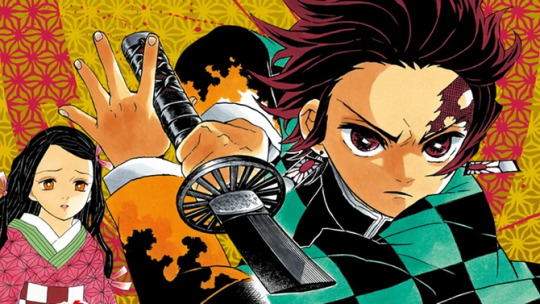
Demon Slayer: Kimetsu no Yaiba usually manga in shonen jump slowly get worse over time as they try to stretch their stories out, but Kimetsu no Yaiba is a story that continues to develop on itself and improve the longer it runs.
The art is phenomenal and has a good balance of when to be silly and when to be drop dead gorgeous. It’s more of an ensemble piece tied together by a big brother trying to save his little sister, and because of that almost every character Tanjirou interacts with is fun and really immediately attention grabbing.
It’s also a pretty heavy story that deals with death, grief and loss and trying to find life beyond a world that has suffering like that. I’m actually planning to make some meta of it soon, especially with the interactions between Domi and Shinobu. My only real complaint is that it’s deep but not too deep. Usually the demons are always bad and the demon slayers are always good in the end, even if sympathy is expressed for some of the demons. Once again though it does so well in the technical aspects of telling the story it wants to tell.
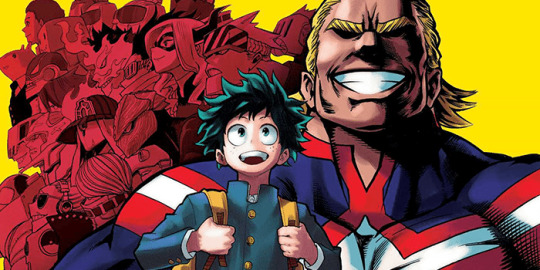
My Hero Academia it’s pretty obvious that I like it. The biggest draws for me are the art style and the characters, specifically the villains. Also the idea of a reverse X men world where what are basically the mutants now outnumber normal people and dominate society is a fantastic idea for world building with a lot of options.
I’ve actually followed Horikoshi’s work for a long time. His two previous works, Oumagodoki Zoo and Barrage both ran in Shonen Jump for a short time before they were cancelled which I find really unfortanate because they both had a lot of potential as well.
I love both the hero kids and the villains, though sometimes I feel like the villains are more connected to the central conflict of the story than the heroes. It would be nice to see Deku evolve a more radical philosophy then just wanting to save people right in front of him, or protecting the status quo. The heroes should ideally act in response to the villains to create a better world and resolve a problem the villains brought up, but if say the League of Villains were wiped out now another League would be created later because the central problem of the story has not been dealt with.
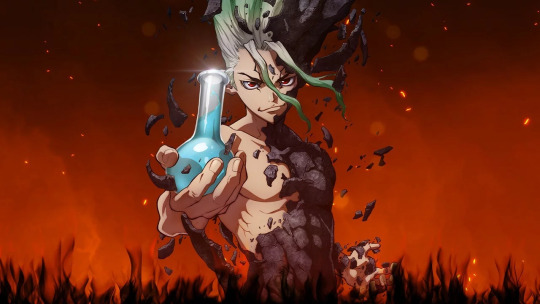
Dr. Stone this is a series that almost got cancelled, but was saved by a main character switch. Senku is really likable and unique as a character, kind of a mad scientist archetype who turns out to be the good guy and the hero of the story.

He reminds me a lot of Yoichi from the writers previous work, Eyeshield 21. In that they’re both laughing mad eccentrics who seem like they have little scruples for how they use and treat other people, and yet are surrounded by friends and act as the leaders of their team. They also both have a tendency for strategy over brute strength and like to outwit their opponents.
The only thing I can say about Dr. Stone is that while the characters are a fun little group of oddballs, they rarely get any deeper than that. The most interesting thing is still figuring out the central mystery of the world and what happened to turn everybody to stone, which is why having Senku as a main character was a really smart move on the series part.
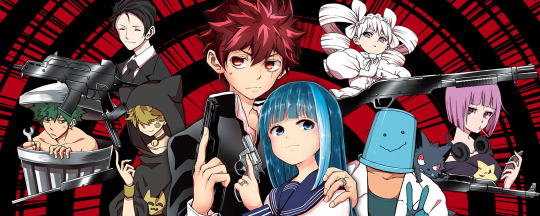
Yozakura Family This is a new series that I actually really like and hope beats canellation at the two week mark. It’s kind of your basic romantic comedy characters get married in the first chapter promise, but also there’s some really strong character writing with the older brother. He’s one of the few examples of the obsessive and overprotective brother type that was portrayed as actually abusive and damaging for seeing his younger sister that way.
The premise also reminds me a lot of Katekyo Hitman Reborn, just suddenly getting sucked into the underworld of spies and crimminals when you’re an unlucky loser with no social skills. If the character writing is as strong as it is for the brother I can definitely see a lot of improvement and staying power.

The Promised Neverland the smartest written series in Shonen Jump write now with the best ideas. The Promised Neverland is all about theme, theme, theme, theme, which is why someone like me who devours stories for their nutritious value and content loves it.
While there are only about three major characters with arcs that matter to the plot, Norman, Ray, and Emma they are some of the deepest characters in shonen jump currently and the complexity of their relationship and the way they all foil each other is superb.
It’s a story about children trying to escape a neverland where they can never grow up, and live in a world that never wanted them alive. Not only is it just about them though, it’s also about adults who are still inside the system and gave up at one point or another and decided to just live in the evil world rather than change it. It’s a deep story but it’s also undeniably shonen jump, the central theme is about not giving up even in a world that is determined to deny your existence.
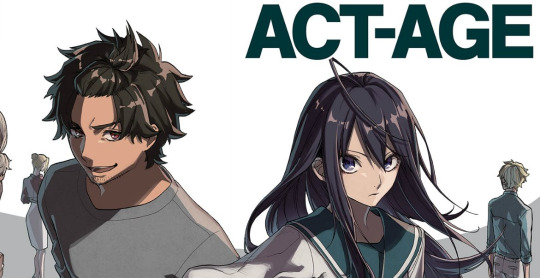
Act Age If you’ve read Chihayafuru this manga has a lot in common with that, because both of them are about very singleminded girls with complex emotions that they themselves don’t understand, finding themselves completely enveloped in a niche hobby to the point of obsession.
Act-Age is a story that’s primarily about storytelling and the nature of stories themselves, with each arc focusing on an adaptation of either a movie made up for the sake of the story or a pre-written play ie, Journey to the West, Night on the Galactic Railroad. However, it’s also bout the nature of stories, as understood by the perspectie of an actor.
There are only a few major characters but they all get intensely developed in their arcs. My absolute favorite relationship is that of the main character, quiet on the surface but with deep emotions that she uses for her acting talent with her rival an actress that’s much more like a pop star or idol. Rather than having deep talent she instead uses her ability to read people to appeal to them. She is cheerful and lively on the surface, but empty inside. The way they envy each other and learn to grow from each other because each of them has what the other one desires.
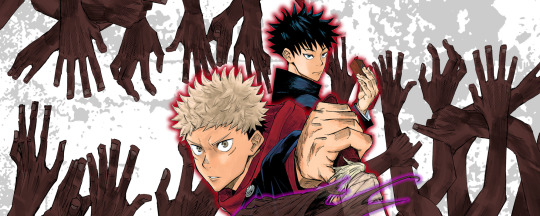
Jujutsu Kaisen reminds me of really early bleach that was just Ichigo and his teenage friends fighting Hollows. This is one of the manga I definitely reccomend, because it’s one of the lesser known manga in jump currently. The art style has this scratchy look about it which really adds well to the horror aspect of the series. It’s a demon fighting anime with some of the best demon designs, more attention is put on making them look grotesque and scary then in series like KNY where the demons for the most part are pretty good looking still.
The main trio is very solid, a reckless idiot who swallowed a cursed finger in the first chapter and is continually dealing with the consequences of that, the shadowy, quiet type cool headed one who almost never talks about his past or his true feelings on the matter, and between them the cheerful girl whose a tad on the merciless side.
Not only are the characters good, but it’s one of the few series where the fights and lore are super interesting. Rather than dealing with demons directly Kimetsu no Yaiba style we deal with curses, which are generated from the human subconscious.
For exmaple one of the villains Mahito is the embodiment of the fear humans have for other humans, that is the anxieties of life, and the fear and suppressed feelings that go hand in hand with humanity. Because that he’s much like a child curse quickly learning and progressing with a human intelligence.
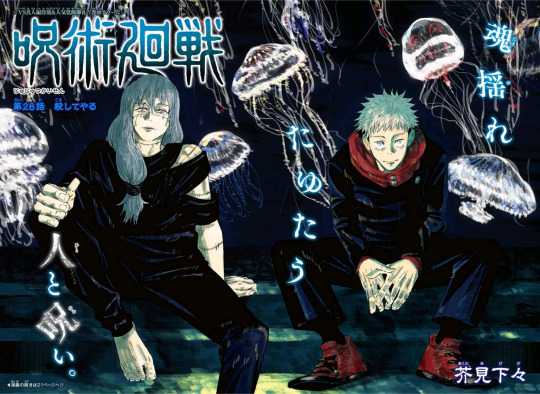
The fights, the powers of characters, they’re all used to further develop a really interesting world of curses and the people who live dealing with them that it feels like we’re only scratching the surface of right now and desperately makes you want to figure out the system they have in place for this entire world.
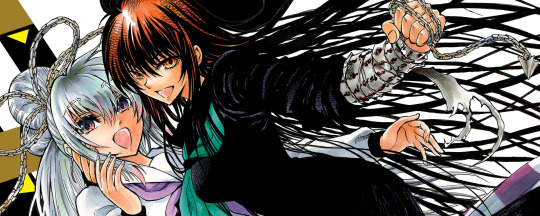
Yui Kamio Lets Loose - I find it to be a really sweet romantic comedy about a stuck up boy obsessed with appearances and what other people think of him falling in love with two sides of a girl, the uncontrollable Yui that beat him up and constantly gets into fights and trouble, and the perfect demure girl who can only ever be helpless and kind and needs to be protected. It has a feel of a lot of classic 80s high school romantic comedies. The only real problem is that it needs to acquire a plot fast, because it’s at risk for cancellation which makes it hard for me to get invested in a series that might end soon.
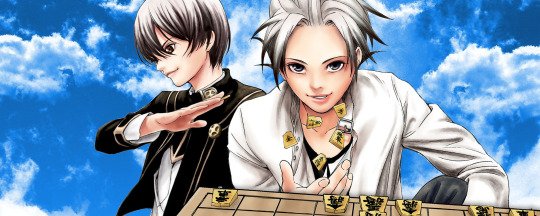
Double Taisei - One of those shonen manga that had a really interesting beginning chapter, but then failed to do anything with it. I think it would work well as a character piece between two personalities who act like brothers in the same body, but the characters aren’t strong enough quite yet to work that way. I do like the character design…
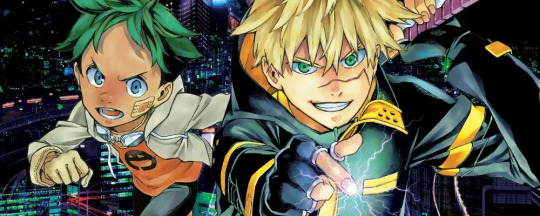
Tokyo Shinobi Squad - It looked like a ripoff at first but the main character is actually fairly different from Naruto, and the manga itself is uniquely its own thing. I just hope it learns to utilize it’s cyberpunk setting better, because ninjas fighting in a cyberpunk dystopia is a very tropey premise and the story needs to utilize those tropes in order to work. I do like the fact that the main character starts out pretty powerful so it’s not a typical shonen formula about a main character slowly learning to gain power, instead it’s him taking in and being responsible for a kid.
Manga I don’t read - One piece, Yuuna of the Haunted Hotsprings, Chainsawman, Samurai 8 the tale of Hachimaru, Beast Children, Miitama Security Busters.
#anime-freakchow#weekly shonen jump#shonen manga#my hero academia#dr. stone#jujutsu kaisen#act-age#the promised neverland#act age#black clover#we never learn#kimetsu no yaiba#spooky speaks#askspookies
316 notes
·
View notes
Text
‘Secret Rooms’ Definitive Edition – A New Century Review

Available on Kindle on Amazon.
Available as an audio series on Bandcamp.
When I first reviewed the original edition of Secret Rooms back in early 2017, I thought it was a solid instalment in this alternate history series of fictional stories. I enjoyed the mix of genres, the variety of conflicts the characters found themselves in, and the balance of humour and more intimate moments where characters went into their experiences with grief. At the time, I saw it as an enjoyable story that is somewhat overshadowed by some of the later instalments in the series which were getting better and better with each book. Having said that, my review for Secret Rooms is still full of the many positives I found in the original edition of the book which make it a great read and/or listen. I stand by everything I said back then, and you can read all of it here.
But things sure have changed since that review. New Century has had two new entries with The Christmas Thieves and Let Them Go, and Secret Rooms has been bolstered with a brand-new Definitive Edition. This new edition adds extra chapters, some re-recorded lines, and just more content that helps this early story in the series stand up with the rest of the impressive entries in New Century. It’s not a radical transformation, but this expansion on the original story makes the narrative feel more complete, more thematically resonant, and just as polished as the other standouts of New Century like Arlington, Tiger’s Eye, and Let Them Go. If you’ve been following me, you’ll know that I’ve been writing up each of the new chapters of this edition which have been collected into a new short-storyline called Weirwood. You can read my detailed thoughts on these chapters here, here, here, and here. What I aim to do with this review is to lay down a string of observations that I noticed while listening to this Definitive Edition and re-experiencing the story of Secret Rooms. If you want a spoiler-free review of the story, the original review absolutely has you covered. If the story sounds like your cup of tea, check out the Definitive Edition, and once you’ve enjoyed it, and you will enjoy it, come back here and we can sit down and talk about the book together.
As I’ve mentioned before, there are moments in this story which seem to take influence from Mass Effect. Encounters are self-contained and varied, making the world of the Reunified States of America feel more alive and unpredictable. There’s also a sense with each of them that, whatever our protagonists decide to do, there are half a dozen other possible outcomes that might have occurred if they had gone left instead of right. Characters discuss their options, and the different suggestions will rarely be unreasonable or entirely without merit. There’s no clear answer to how each of the problems they’re confronted with ought to be resolved, so the story of Secret Rooms is very much about a group of people trying their best to do the right thing and help as many people as possible. A lot of the time, that means making choices that aren’t guaranteed to lead to the best outcome. A lot of the time, they simply have to take a leap of faith and hope that it will be for the best.
Speaking of Mass Effect, you could summarise parts of Secret Rooms as a charismatic badass female leader recruiting a number of striking personalities in order to accomplish a seemingly impossible task. Yes, I am comparing Annie Oakley in New Century to FemShep, and I find her sentiment that the world isn’t going to get any better unless we step outside and make it better inspiring. In contrast to how Arlington pitches Annie against unpredictable and overwhelming forces that render her practically powerless, Secret Rooms shows Annie in her most impressive light. What makes the story of this book as compelling as it is then is that, after Annie is established to be the ideal image of a Cartographer, she passes the responsibility of decision-making to Abigail for the duration of their excursion together which makes up a good portion of the narrative. At first, this is done to give Abigail a taste of what it’s like to be confronted with a difficult situation so that she can appreciate what is required of being a Cartographer. Once they arrive at the House of Versteckt, however, Annie is forced to leave James and Abigail to fend for themselves as she rides to gather reinforcements. This is James and Abigail’s greatest test, and after making it through, they’re changed forever. Secret Rooms is the story of these two capable yet inexperienced characters and their journey to find their own way as they set out from their familiar home and are cast into completely uncharted territory. Having Annie play an important supporting role as this accomplished Cartographer supervising these two new recruits provides a safety blanket for the first part of the story, but once we enter the final act and the two are left alone, our protagonists seem unbearably vulnerable.
I’ve already discussed the accomplishments of the additional chapters as an emotionally affecting story-thread within this new edition of the book, but it must be stressed that these chapters aren’t just a tacked-on short story. The new chapters are integrated into the existing structure of Secret Rooms seamlessly, and they even reinforce some of the key story-beats and themes of the original text. After we’ve seen half of the people of New Athens leave for dangerous lands in spite of Abigail’s best efforts to convince them against this course of action, we transition back to the story of James and Abigail’s past at Weirwood. The first part of this section has James relate a memory he had had of Nathan telling him that the best way to convince a wondering chicken to come to you was to pretend you weren’t interested in it and didn’t want it. By placing this immediately after the chapter where we see that Abigail couldn’t get these wandering civilians to come with them, the audience is invited to form a connection between the two moments separated by time. Is it possible that Abigail would have found more success if she had not made it clear that she really wanted the people of New Athens to come with them, as Nathan suggests you avoid coming on too strongly with the chickens? Or could it just be that there really is no way to convince something out of your control to be tamed when their mind is set against it, so all you can do is steer into it and act like you never even wanted it in the first place? Either way, I appreciate how the added chapters reinforce moments from the original story in little ways like this.

One theme in particular that becomes much more pronounced in this newer edition is the concept of human relationships between a group of three people who love each other. Abigail and James both share a personal connection with Lucy and with each other. For a time, they are content as this group of three that has somehow found a happy balance. Even when things get messy and complicated, the individual pairings we see, first with James and Lucy, then Lucy and Abigail, is presented as something sweet and beautiful, even if it does lead to the third member of the group feeling hurt in each case. It’s compelling drama that takes this situation seriously – you certainly couldn’t accuse this plot thread of being a clichéd love triangle, as it’s much too well-observed for that. It taps into a very human experience, and while part of you wants to blame someone when things go wrong, the writing ensures that you understand why things happen as they do, making it an intensely bittersweet story, even before the tragic ending reveals itself. As I listened through the Definitive Edition and reached Part Four, I realised some of the parallels that can be drawn between these three and the story of Krieger, Greta, and Charlotte. The Definitive Edition presents us with two groups of three, each of them being made up of two female members and one male member, and each group is made up of people who share a romantic love for one another. All of these people are in love with not just one person, but two people. And, sadly, the two groups are also alike in that they have each lost one of its members, and each group mourns the loss of the sensitive soul that they so dearly miss.
It could be that these similarities are there to make us notice the connection and then ask what makes the two trios different from one another. While Lucy, James, and Abigail were young, practically children when they felt this love for multiple people and were struggling to process these feelings, we see evidence that Krieger, Charlotte, and Gretta managed to maintain a polyamorous relationship for an extended time as adults. This makes me wonder what might have been if Lucy was still alive; could the three of them have worked things out and still be close? Is there one reality where Lucy is still alive and the three of them enjoy a long-term polyamorous relationship with one another? Then again, the trio from the House of Versteckt certainly isn’t a wholly perfect example of a healthy polyamorous relationship, at least in respect to the awful thing that Krieger does to Charlotte. The final chapter does a brilliant job at getting you to be sympathetic towards Krieger even as he discusses the process of killing one of the women he loves and his reasoning for doing so. His logic for why it’s too dangerous for Charlotte to continue as she is does seem sound, and you can tell from the words and Matt Wardle’s emotional performance that this is killing Krieger. Even so, in comparison with Abigail and James allowing Lucy to be free and go out into the open world as they let go of her, Krieger sealing Charlotte away and making the decision for her that her life needed to end is a horrifying violation. If you’re looking for evidence that Krieger’s actions have had lasting negative consequences that Charlotte herself did not want, look no further than the fact she appears to Abigail as a ghost, her spirit being trapped by what Krieger did. The dynamic and interconnecting relationships of each trio is touching, heartbreaking, and fascinating to see unfold as the narrative progresses, and the Definitive Edition makes this one of my favourite aspects of Secret Rooms.
There’s also a point of connection between Lucy and Krieger due to them both having conversations with the main characters about the cosmological and their place in the wider universe. When Krieger delivers his lecture about Pandora’s Box and the theory of multiple realities, I couldn’t help but think of Lucy and James sitting together looking at the stars all those years ago at Weirwood. A crucial difference, however, is that while Krieger sees the scope of reality and the potential Lovecraftian horrors out there and thinks of the fearful implications of that (despite his insistence that he would still open many boxes and explore many realities), when Lucy considers her small stature in the scale of the infinitely greater universe, she sees the hopeful side of things. If nothing matters, then everything matters, as she says. I appreciate having these two moments of introspection from different characters and seeing their different conclusions on, more-or-less, the same subject. It opens things up, and makes me even more contemplative than the original edition had already made me.
On a similar topic, the starry eyes, both those that Gretta is revealed to have and those that Abigail and James acquire after touching the orb, made me think of Lucy and her stars, especially as James describes looking into Gretta’s eyes like looking up into the starry sky at night. Perhaps this would be the only way to describe such a concept, but it nevertheless felt like a deliberate connection between the eyes and this important memory of Lucy. My interpretation is that this connection is there to make what Abigail and James see when Krieger and Gretta leave through the Wind Door and Gretta’s eyes are revealed feel even more like something beyond their world. This memory of Lucy and the stars is like an ethereal moment which is forever out of reach for James, so the connection between this moment and seeing Gretta’s eyes makes it feel like we’ve stepped beyond what we can understand or touch in the physical world that we know.
Listening to Secret Rooms this time around, I realised how much of a blow it is for James to lose one of his eyes. The original draft already did an effective job at conveying how much the loss of their eyes will affect James and Abigail through the writing. But because we get that added time with the two of them at the start of the Definitive Edition that shows us these characters from an early age, I feel the magnitude of how much of what James relies on to get by will be irreversibly affected by what he’s lost. We know how much he needs his powers of observation to get by in his day-to-day interactions with people and his duties as a doctor. So much of his identity has been built around his sharp eye and his close attention to detail. Now that his sight is less than what it was, these parts of his identity are affected considerably, and you can imagine how that would make James feel unsure of who he is now that he’s no longer that version of himself.
The Definitive Edition of Secret Rooms is a terrific success. I enjoyed this story before, but with the added content that this new edition brings, there’s more time with the characters which makes the later sections of the story more meaningful, and the themes are bolstered by the story thread with Lucy which invites us to draw parallels between what happened in the past and what we see in the present. On top of that, the story of Lucy and Weirwood is just a really emotionally affecting story about past regrets, achingly beautiful memories, and the deep connections between three people who loved each other. Maya Santandrea is a wonderful Katherine Holloway and I’m sure there are dozens of little audio adjustments and small technical edits throughout the audiobook which make the whole thing even more polished than it already was. Tiger’s Eye and Arlington are still at the top of my list of New Century stories, but through a combination of coming to appreciate it even more on a second listen and some really well-implemented additions to the text, Secret Rooms has climbed up high to be yet another of the really close favourites that the series has in spades. Depending on my mood, I could very well see myself saying that Let Them Go, The Princess Thieves, or yes, Secret Rooms is my favourite New Century story.
Final Ranking: Gold.
Striking an impressive balance between a fun spirit, nail-biting tension, and emotional drama, Secret Rooms takes you through a remarkable number of different genres and tones, and it makes all of them work. This was already a good story. Now it’s even better.
Join me in the new year as we dive into all-new territory with New Century’s most ambitious story yet, SteamHeart.

#The Inquisitive J#review#critic#narrative#narrative analysis#fiction#audiobook#audio drama#fictional podcast#books#alternate universe#alternate history#alternate history fiction#new century#new century multiverse#the new century multiverse#secret rooms#secret rooms definitive edition#the inquisitive j reviews
2 notes
·
View notes